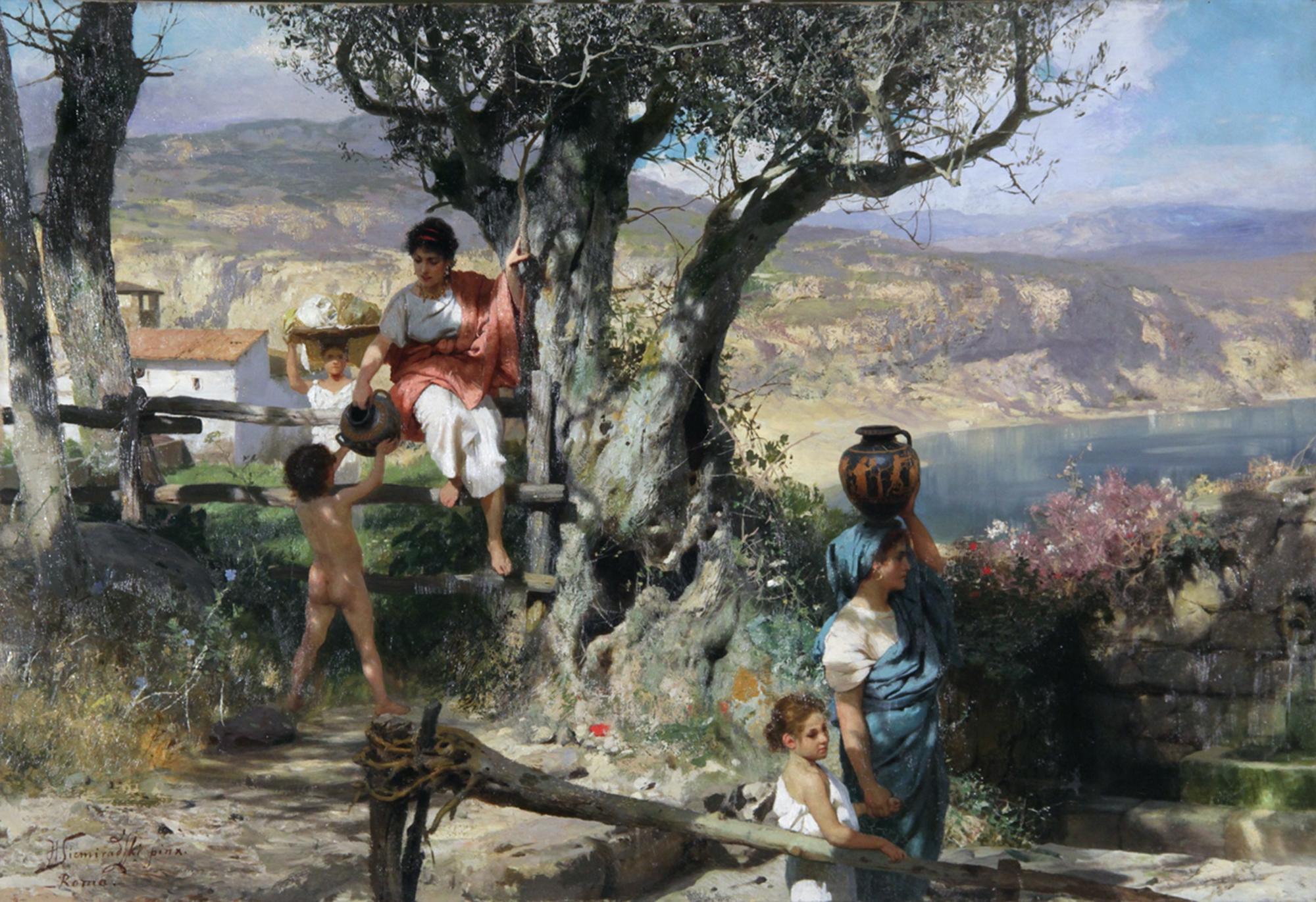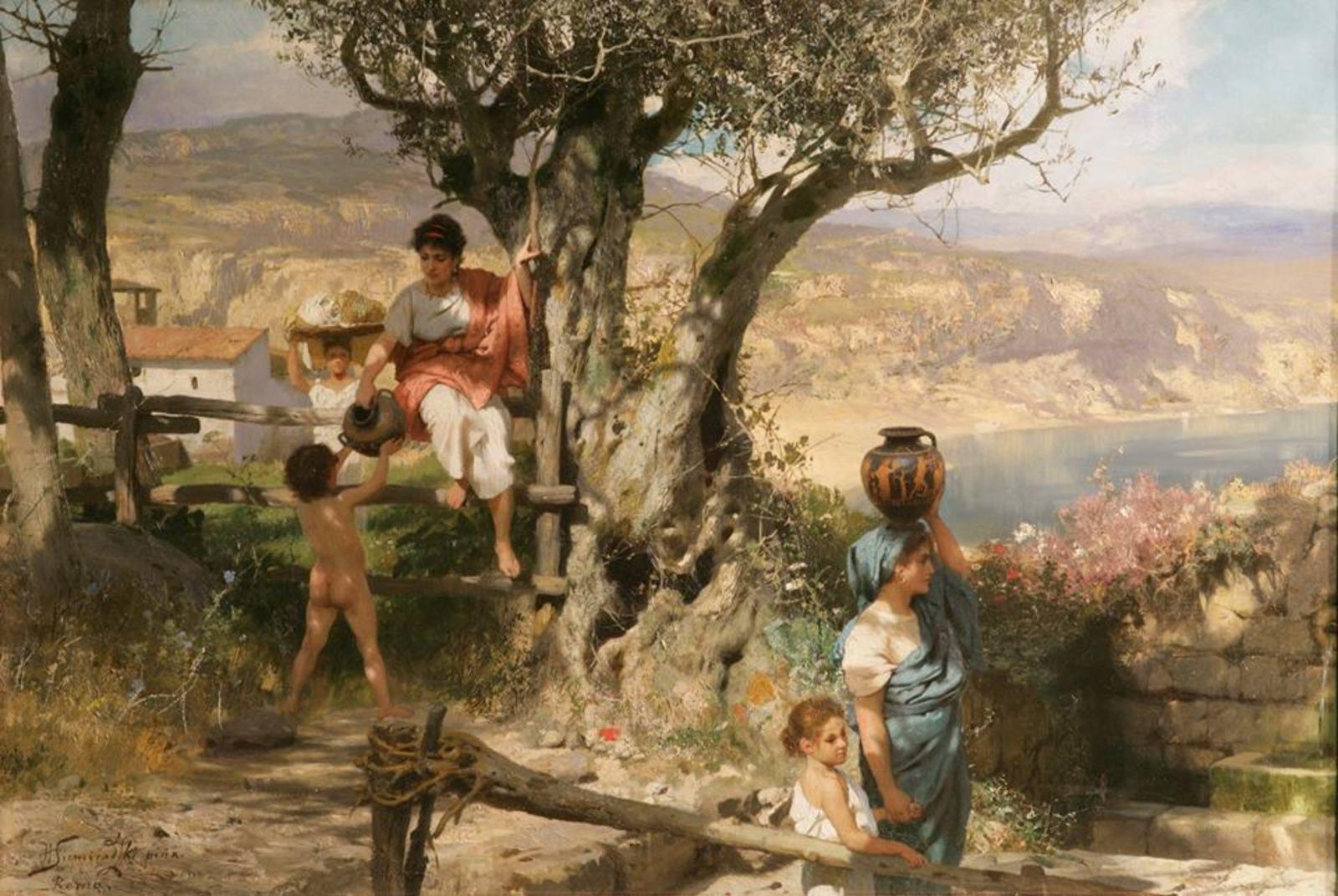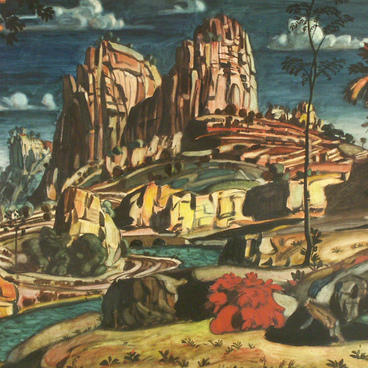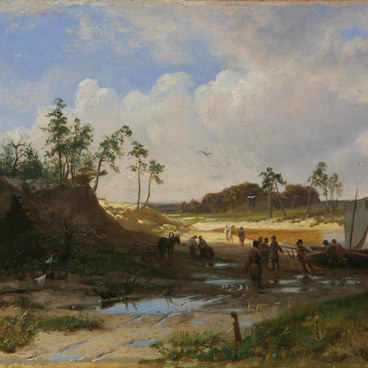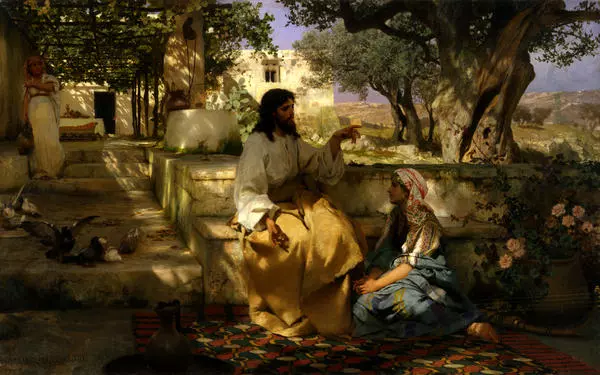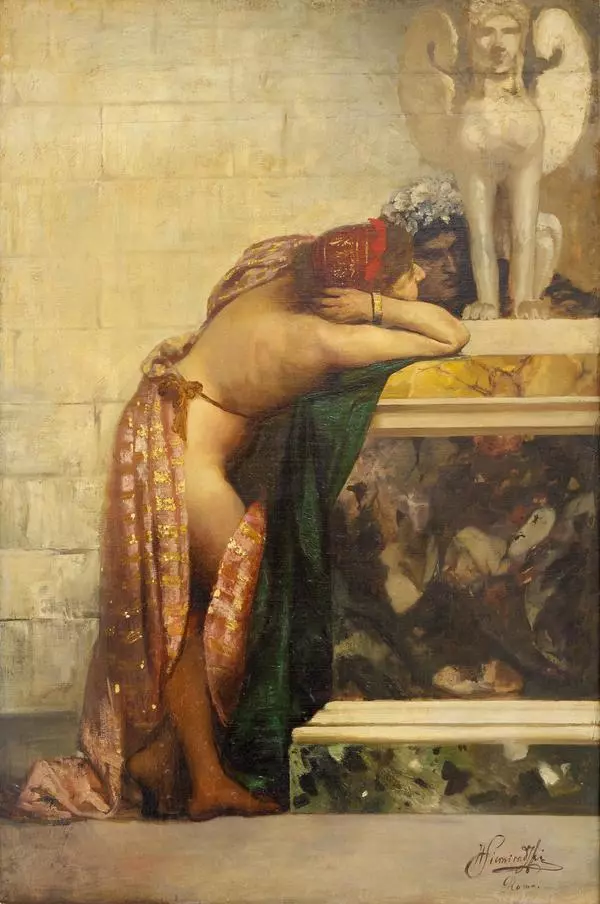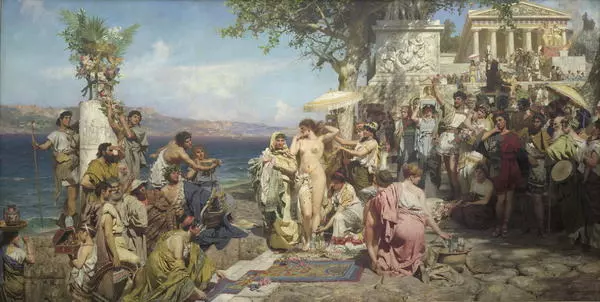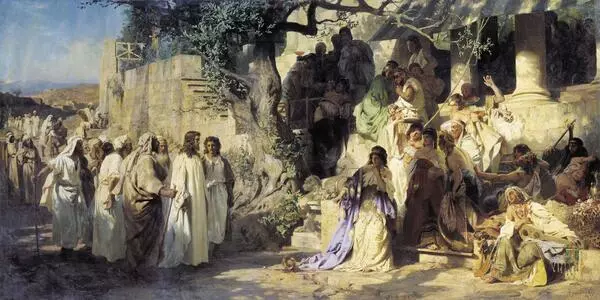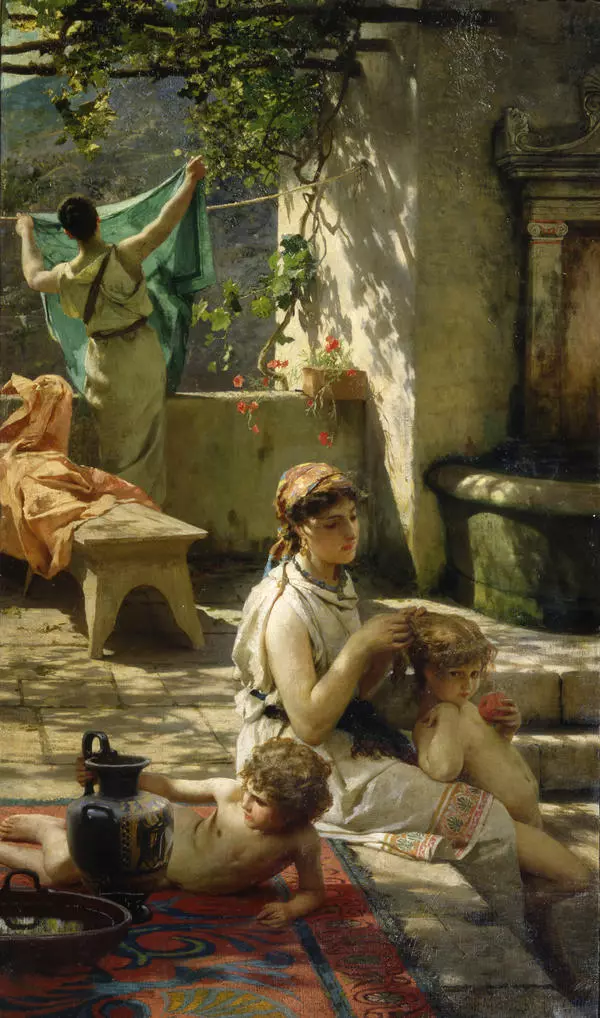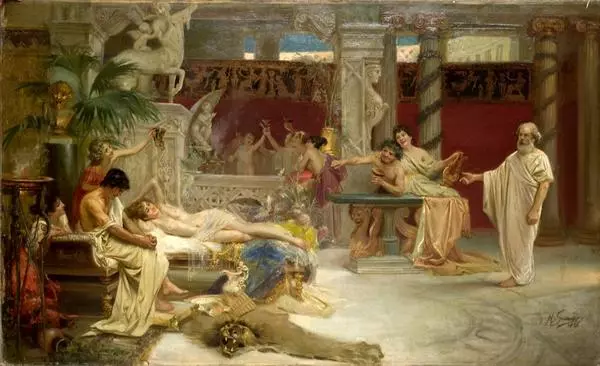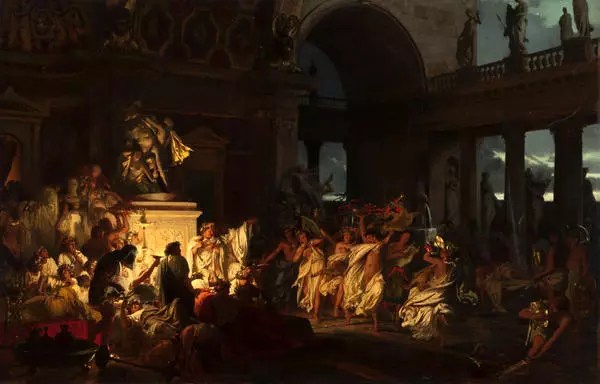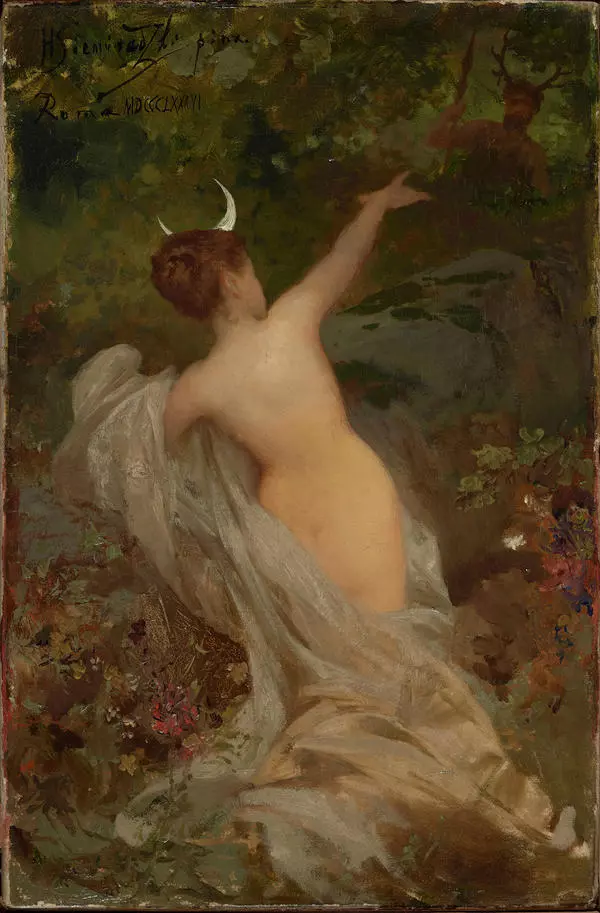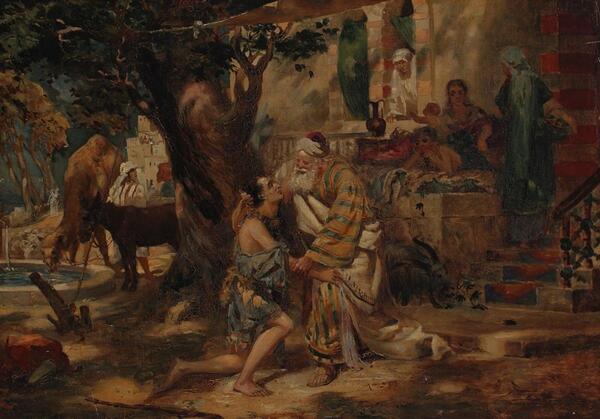Russian-Polish artist Henryk Siemiradzki is considered one of the most talented representatives of the academic school of painting in the 1870s. In 1872, he graduated with honors from the Saint Petersburg Academy of Arts and went to Italy. According to the memories of the artist’s relatives, as soon as he saw Rome, everything else ceased to exist for him. Since then, Siemiradzki lived in the “eternal city”, but never broke his close contact with the Academy. He became famous for large-scale multi-figure paintings based on ancient history and early Christianity.
Inspite of the criticism of Russian art historians for leaving local life, Siemiradzki’s talent was recognized in Europe. The artist had the academic ranks at the Art Academies in Saint Petersburg, Berlin, Rome, Stockholm, Turin, as well as the French Academy of Fine Arts. The famous Uffizi Gallery commissioned a self-portrait from him.
The best period of Siemiradzki’s carier was in the 1880-1890s, when he kept receieving awards at academic exhibitions in Saint Petersburg. While painting large multi-figure works, the artist constantly worked on smaller paintings based on the ancient life. The public appreciated the fascinating and entertaining subjects. These small “ancient genres” settled in the palaces of the Russian and Polish nobility, in bourgeois living rooms and professors' offices. Among these works is the painting “Roman Village. For Water” with beautiful composition and techniques of open air painting. The bewildering southern nature does not absorb man, but emphasizes his perfection and beauty.
The authenticity of the objects was intended to convince the viewer that antiquity was not a golden dream, but a reality. “Here they are - antique virgins in light tunics, resting in the shade of olives on a hot afternoon, caressing children, carrying amphoras with water or wine, while the sun shines through the foliage, and a shadow lies on the marble of benches and fountains, ” wrote one of the admirers of Siemiradzki”s talent.
Inspite of the criticism of Russian art historians for leaving local life, Siemiradzki’s talent was recognized in Europe. The artist had the academic ranks at the Art Academies in Saint Petersburg, Berlin, Rome, Stockholm, Turin, as well as the French Academy of Fine Arts. The famous Uffizi Gallery commissioned a self-portrait from him.
The best period of Siemiradzki’s carier was in the 1880-1890s, when he kept receieving awards at academic exhibitions in Saint Petersburg. While painting large multi-figure works, the artist constantly worked on smaller paintings based on the ancient life. The public appreciated the fascinating and entertaining subjects. These small “ancient genres” settled in the palaces of the Russian and Polish nobility, in bourgeois living rooms and professors' offices. Among these works is the painting “Roman Village. For Water” with beautiful composition and techniques of open air painting. The bewildering southern nature does not absorb man, but emphasizes his perfection and beauty.
The authenticity of the objects was intended to convince the viewer that antiquity was not a golden dream, but a reality. “Here they are - antique virgins in light tunics, resting in the shade of olives on a hot afternoon, caressing children, carrying amphoras with water or wine, while the sun shines through the foliage, and a shadow lies on the marble of benches and fountains, ” wrote one of the admirers of Siemiradzki”s talent.
